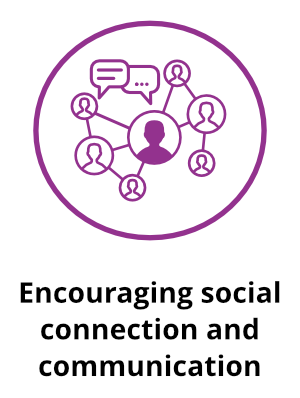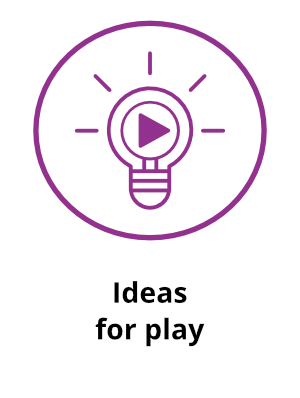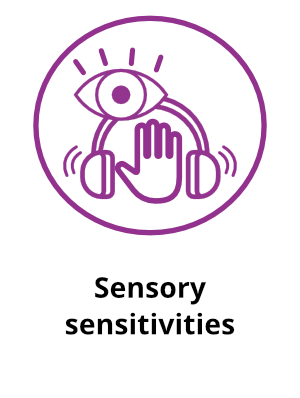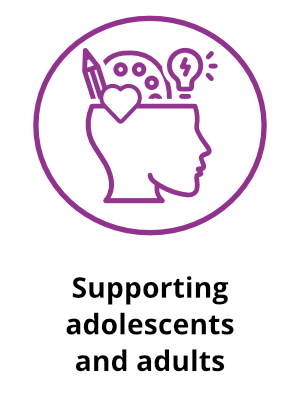Autism-like Cluster
Home > TAND Clusters > Autism-like > What to do > Sensory sensitivities
Sensory sensivities
You may have reported in the TAND-SQ Checklist that you or your child has sensory differences. These can take various forms, such as being very interested in certain sensations, such as sights, or sounds, and deliberately seeking these out in unusual ways. Or you could have noticed hypersensitivity to various sensations in light, smell, touch, or sounds which result in a lot of distress and behaviours such as covering ears, or pulling away from physical touch or avoiding certain clothing. At other times, individuals could even seem hyposensitive to certain sensory experiences, such as painful or loud stimuli, and not react at all.
You or your child might even have experienced sensory overload when sensory experiences overwhelm your ability to cope. This can be triggered by a single event, like an unexpected loud noise, or it can build up over time due to the effort it takes to cope with sensory sensitivities in daily life. Sensory overload can feel like intense anxiety, a need to escape the situation or difficulty communicating. When the brain has to put all of its resources into sensory processing, it can shut off other functions, like speech, decision making and information processing.
In the resource panel, Autism Speaks has listed a number of accommodations for hypersensitivity and hyposensitivity that could help you or your child to manage your sensory needs, examples are listed below.
An Occupational Therapist may also help in setting up a graded programme to improve sensory processing.
Sensory Issues
[autismspeaks.org]
Sensory Sensitivities: Autistic Children and Teenagers
[raisingchildren.net.au]
Sensory Processing: a Guide for Parents
[cerebra.org.uk]
Accommodations for hypersensitivity
- Using light covers, sunglasses or a hat under fluorescent lights.
- Wearing ear plugs or headphones in noisy environments.
- Working in spaces with a closed door or high walls.
- Avoiding strongly scented products.
- Choosing foods that avoid aversions to textures, temperatures or spices.
- Wearing soft, comfortable clothing.
- Adjusting schedules to avoid crowds.
Accommodations for hyposensitivity
- Visual supports for those who have difficulty processing spoken information.
- Using fidget toys, chewies and other sensory tools.
- Arranging furniture to provide safe, open spaces.
- Taking frequent movement breaks throughout the day.
- Eating foods with strong flavours or mixed textures.
- Weighted blankets, lap pads or clothing that provides deep pressure.











